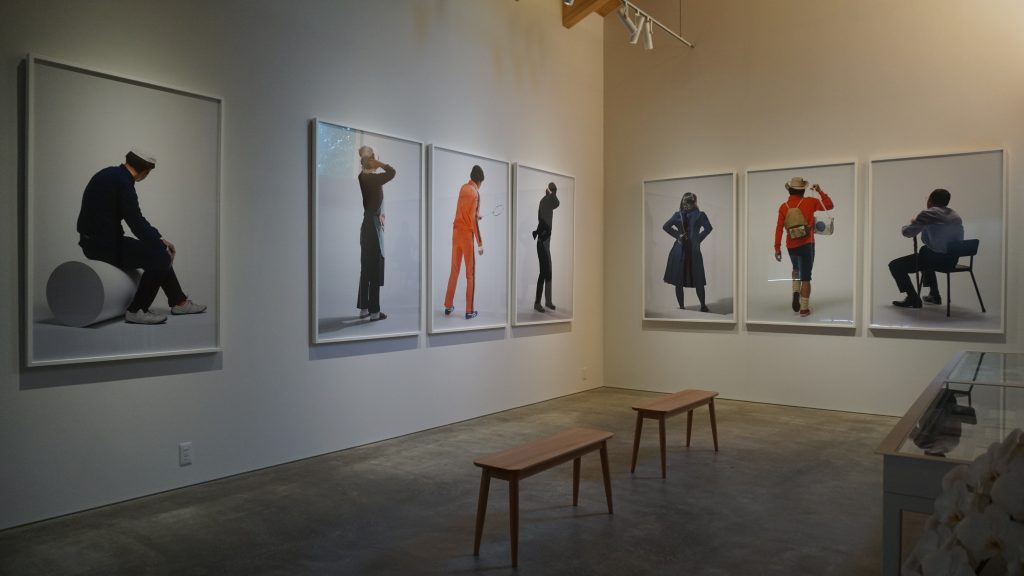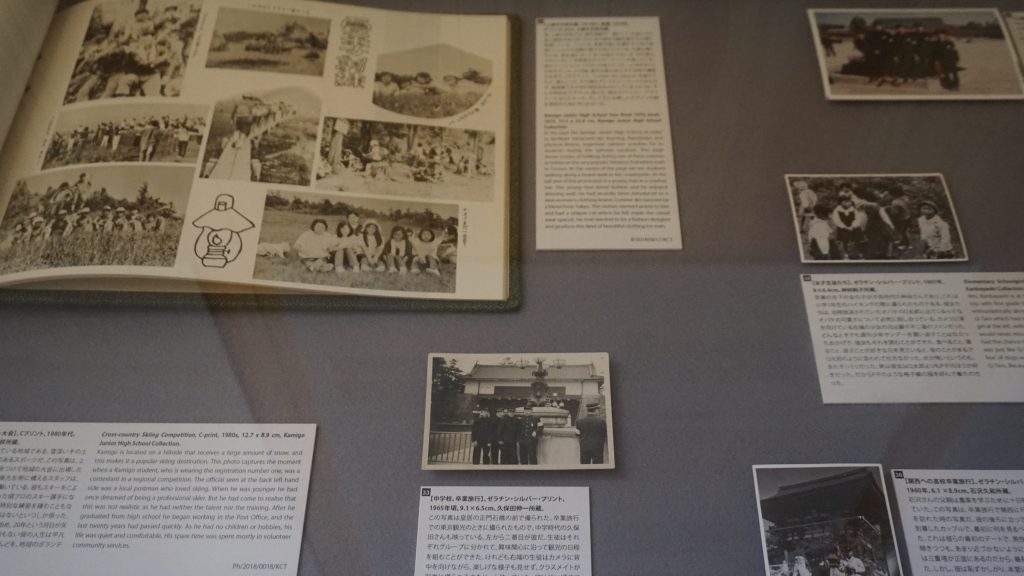可轉中文版
Old snapshots spark off memories. Stories and emotions are recalled, be them your own or strangers’. Photographs, as they capture a particular fraction of a second, serve as material remains of past events and are closely linked with reality. Who are these people in the photographs? How are they related? Where is this place, and what happened there? Each detail is connected to endless anecdotes. It seems that history, time and stories are crystalized in these images.
Photographs have replaced facts as tokens of history. The camera is ever present during gatherings, trips, festivals or community events. During their call for old photos, Leung Chi-wo and Sara Wong visited five families in the district of Tsunan (Are they the families of Mr Kubota, Mr Moriguchi, Mrs Nisizawa, Mr Nakajima, and Mr Ishizawa in the stories?). The artists have also made a selection of photos from school albums, historical photo books and newspapers, and then written stories about them. From the forty-odd photos selected, it seems that the artists were trying to discover personal and “small” history from once prosperous fields, customs and people, as apart from the grand narrative of History with a capital H. Home visiting is a means to establishing relationships, and to share family albums is not just mannerism for receiving guests, but is a bond of friendly trust. To re-create history with a small “h” is to break free from the narratives of History with a capital H.
Leung Chi-wo and Sara Wong demonstrated interesting perspectives on the photographs by focusing on random people who were accidentally captured with their backs to the camera. After having registered every detail of their poses and costumes including tailoring, fabrics, colours and accessories, these random strangers were re-enacted by the artists and once again photographed in a studio setting. The very act of re-creating these characters in photography demonstrates how much in details and meticulously the artists have looked into the original photographs. The sharp and brand-new images, isolated from the context of their time, blur the distance between past and present. The absence of any background makes it difficult for the viewer to determine the identities of the characters, the location in which they were placed, and the context of what was happening.
On top of being vessels of images, photographs are also interpretation of real life. However, the photograph only preserves the appearance of a split second, without recording any meaning. Meaning was born as a result of the viewer’s interpretation of the image. The most “loyal” and popular method of generating meaning is to interpret or postulate according to the context of the photograph. Therefore, the meaning of photographs has always been varied and full of ambiguity. When I was trying to understand the stories behind the photos from the accompanying text, I encountered information that should be inaccessible to the artists, as I dug into a few paragraphs. I often found similar issues such as social movement and gender roles recurring throughout the narrative text.
Text is not just a tool to organize information, but is a creative medium as important as the photographs. Detaching these old Tsunan photographs from their context, Leung Chi-wo and Sara Wong enlarged the possibilities of fictional narratives. Their fictional contribution steals its way into the memories of those families. The discovery of the fictional in these texts is also a discovery of the possibilities of how meanings of photographs can be created.
Almost life-size, these photographs painstakingly mimic people from real life. Details and backgrounds about these people, however, were created with a sense of drama as in fiction writing. The design and use of Hong Kong House, built on the site of a dismantled village house, have no apparent connection with the village in which it is located. Tsunan Museum of the Lost is suitable to be displayed in the setting of a white cube. The fact that this exhibition and the style of Hong Kong House match each other seems to be a metaphor on the fact that, some artificial additions are inevitable in every art festival that aims to merge in with local environments. Art is not above everything, and it should never be regarded as a mere tool. After all, what artists could do on earth is, making art.
Life is full of imperfections and loss. No matter how important it is to revisit history, we cannot deny the fact that digging into the past is a process during which we face our loss. What we have “lost” is not only our knowledge and feelings of Tsunan, but also the motive to comprehend the past through old photographs.




 中文
中文